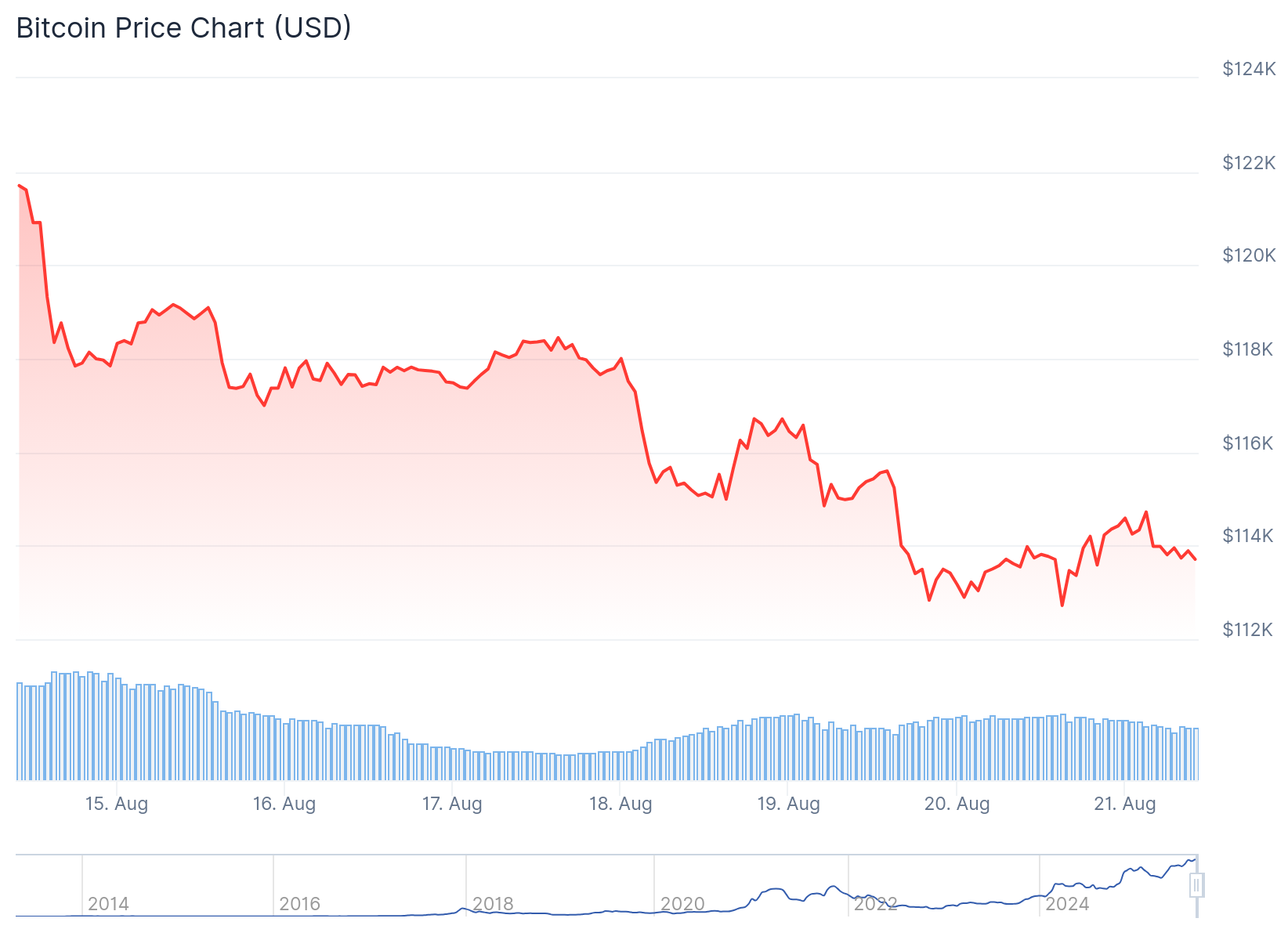TLDR
- Bitcoin’s price action still follows its historic four-year halving cycle despite predictions of institutional disruption, according to Glassnode
- Long-term Bitcoin holders are taking profits at levels comparable to past market peaks, suggesting the cycle may be further along than expected
- Bitcoin ETFs have seen $975 million in outflows over four trading days as demand shows signs of weakening
- If the cycle continues, Bitcoin’s peak could arrive as early as October 2024, based on historical patterns
- Some analysts argue the cycle is broken due to institutional adoption and Bitcoin treasury companies holding nearly 1 million BTC
Bitcoin’s four-year cycle continues to generate debate as the cryptocurrency navigates between traditional patterns and new market forces. Analytics firm Glassnode maintains that Bitcoin’s recent price movements still echo historical cycles despite growing institutional involvement.
The debate centers on whether increasing corporate adoption and Bitcoin ETFs have fundamentally altered the market’s cyclical nature. Bitcoin reached a new high of $124,128 on August 14 before dropping 8.3% to current levels around $113,940.

Glassnode points to several indicators suggesting the cycle remains intact. Long-term holders who have kept Bitcoin for more than 155 days are taking profits at levels comparable to previous euphoric market phases. This behavior reinforces the impression that the market may be late in its current cycle.
Capital inflows into Bitcoin are showing signs of fatigue according to the analytics firm. Spot Bitcoin ETFs have posted outflows of approximately $975 million over the past four trading days based on Farside Investors data. The weakening demand has pushed traders toward riskier volatility bets.
Open interest across major altcoins briefly reached a record high of $60 billion before correcting with a $2.5 billion decline. This surge in speculative positioning coincided with the slowing appetite for Bitcoin itself.
Historical Patterns Point to October Peak
If Bitcoin follows its typical cycle timeline, highs may arrive as early as October. In previous cycles from 2018 and 2022, peak cycle highs occurred just two or three months beyond the current timeframe when measured from cycle lows.
Crypto analyst Rekt Capital predicted in July that following the 2020 pattern would see the market peak in October. This would be 550 days after the April 2024 Bitcoin halving event.
Frank Fetter from Vibe Capital Management notes that traditionally there has been an average of 1,060 days between Bitcoin making a bottom and reaching a top in bull markets. Currently Bitcoin sits approximately 1,000 days from its 2022 bottom, suggesting potential runway remains.
Institutional Forces Challenge Traditional Cycles
Several industry figures argue the growing number of public treasuries buying Bitcoin may lead to different cycle behavior. Author and investor Jason Williams highlighted that the top 100 treasury companies hold almost 1 million Bitcoin.
BitcoinTreasuries.NET data shows publicly traded Bitcoin treasury companies hold approximately $112.17 billion worth of Bitcoin. This level of institutional holding represents a new dynamic not present in previous cycles.
Bitwise chief investment officer Matt Hougan declared in late July that the Bitcoin cycle “is dead” and expects Bitcoin to see positive performance in 2026. Hougan believes this cycle’s timeline will differ because halving cycles matter less over time and interest rate cycles are becoming more favorable for crypto.
The 2024 cycle already broke traditional patterns when Bitcoin hit new all-time highs before the April halving. Historically bull markets only began after halvings were completed with new highs arriving a year later.
Michael Saylor’s Strategy Inc. (formerly MicroStrategy) exemplifies the new institutional approach. The company started buying Bitcoin in 2020 and now holds over $74 billion worth of BTC. The company announced its latest purchase of 430 BTC on Monday.
Bitcoin has crossed $100,000 in December 2024, nearly doubling its previous $69,000 all-time high from the last cycle. This acceleration occurred months ahead of traditional cycle expectations.






